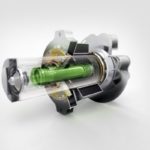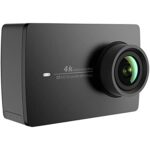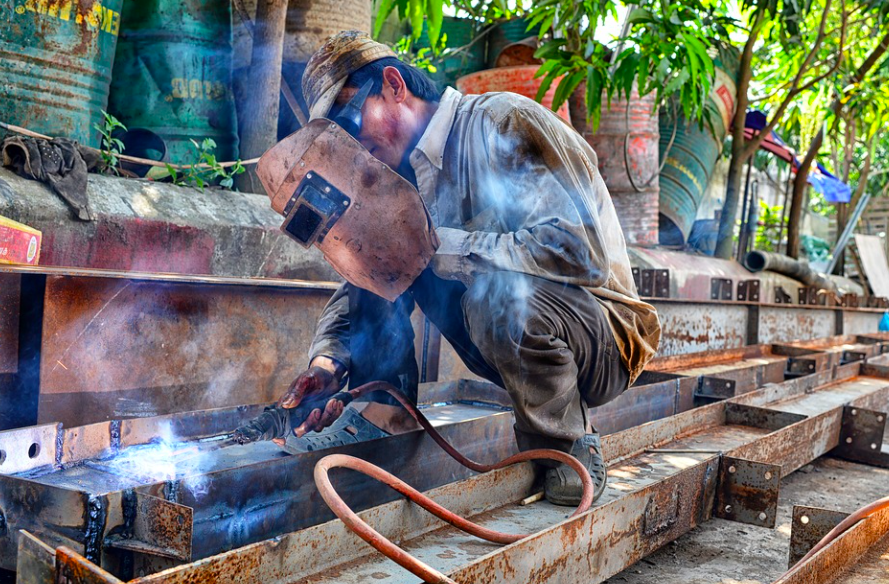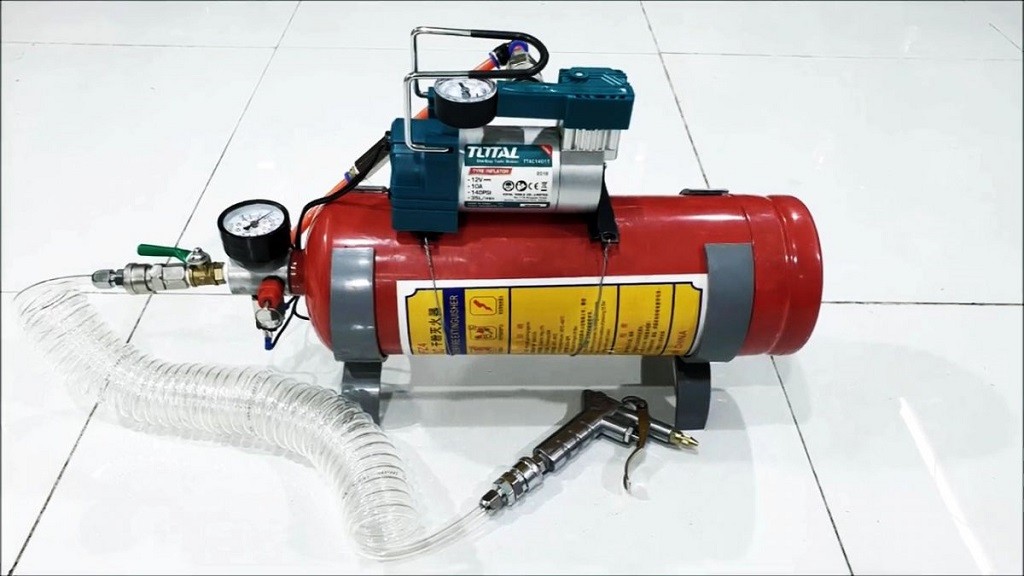How to choose a compressor for a car: what to look for when buying
What should a fragile woman do when there is not a single driver on the road, and the tire suddenly goes flat? Or when it is difficult to inflate your car tires with a hand pump? It’s simple – you just need to buy and constantly carry a compressor in the trunk. Read about what exactly a car compressor is for, its types, characteristics and much more in our article today.

The content of the article
What is it - a car compressor, pump
A machine compressor is a device that automatically inflates vehicle tires. Auto-compressors speed up the process of inflating wheels, plus they allow you to control the operating pressure (so as not to overdo it or, conversely, not to overinflate).
Let's imagine a situation: you are driving along the highway, when suddenly there is a bang in the car. You decide to stop and check what the problem is. As it turned out, the tire either burst or went flat, so you can hear the clear clicking of the disk on the asphalt surface.
There is no spare tire at hand, but it is necessary to check the wheel for integrity. We take out our compressor, and in a couple of minutes we have the result: the tire is punctured and needs to be replaced, or everything is fine - it just flattened a little due to the pressure difference.With a hand pump, you'd be doing this for half an hour, maybe more.
Additionally, the pump can quickly inflate a beach mattress, balls, toys, etc.
To pump up the tire itself, you don’t need much action: turn on the device to the car’s power supply, check the pressure readings on the pressure gauge and connect the pump itself. We pump the air to the desired level.
How to choose a car compressor for inflating tires when you don’t know the right option
Among the main types of automatic pumps, it is customary to distinguish three:
- piston - the most common, inexpensive and productive;
- membrane - not suitable in winter; only for passenger vehicles;
- rotary – one of the most expensive; are not required for the average driver, since the piston version has enough functionality.
Compressor power is measured in liters per minute. This is necessary to know, since each model is designed for a specific vehicle size. For example, for a passenger car – from 35 l/min; for jeeps and buses – from 40 l/min. The larger the vehicle and tires, the more work the pump needs to do in a given time.
Next we will talk about how to choose a compressor for a car according to its type and technical characteristics. Believe me, everything is not as difficult as it seems at first glance.
Which car pump to choose: detailed analysis
Let's consider all the basic characteristics of pumps.
Performance
As we said earlier, the indicator measures the performance of the device (the measure is liters per minute). The model is only suitable for a certain type of wheel. Previously, we did not indicate about trucks: here the higher the indicator, the better. You can take about 60-70 liters per minute, this is quite enough for large tires.
For small cars with 14-inch tires, this compressor option will simply be an overpayment. A regular pump is sufficient.
The maximum amount the system can pump
The value is measured the same way, it’s just that manufacturers may indicate different markings (Bar or ATM). But it's the same unit of measurement, don't worry.
The measure indicates the maximum pressure of compressed air that can enter the pumping point. The technical data sheet of the pump, or on the tires, indicates a safe value that should not be exceeded.
In imported compressor passports, the marking is different: they indicate the starting value as a base (zero), while in domestic ones it is already assumed that there is a tire resistance of 1.8 Bar. The last value more accurately determines how much we need to pump up.
For a small car, about 3 ATM is enough. For freight transport, the compressor produces 8-10 ATM.
What tires can the compressor pump?
First of all, you need to know the volume of air for the required tire diameter. This way you will definitely buy what you need and not overpay.
The compressor has an advantage over a mechanical pump, as it can pump wheels from 12 inches (children's bicycles) to 26 inches or more.
What's with the pressure gauge?
The device on the compressor allows you to see how much pressure it supplies to the closed system. Without a built-in pressure gauge, you are like without hands - you will not be able to see how much you have pumped and how much more is required.
What types of pressure gauges exist:
- mechanical - have two scales for measuring pressure and a working pointer. Since the needle may shift during long-term operation, there is a slight error in used devices;
- digital - the parameters are displayed on the display. Sometimes, even accurate to hundredths of a bar.For convenience, you can change the value of the measure (Bar, ATM, etc.). That is, you can measure pressure in those values that you already understand or are at least familiar with.
Some digital pressure gauge models have an automatic stop system. You can specify how much air to pump into the tire. And the pressure gauge will automatically turn off pumping when this parameter is reached. Thus, the system is automated and works even without your participation.

What is affected by the connection and wire length?
This parameter determines how far the compressor can be extended from the machine. With a long cable you can reach any wheel. The optimal parameter is about 3 meters.
Regarding the type of connection, the pumps are connected in the following ways:
- through the cigarette lighter - for small devices with a voltage of less than 15 Amps.
- through the battery itself—withstands any voltage level.
Some compressors can be charged from the mains. And then freely inflate a couple of wheels without a direct connection to the power supply.
What characteristics did we miss when choosing a compressor? Tell us in the comments, we will be happy to supplement our material with real experience from users and experts!





